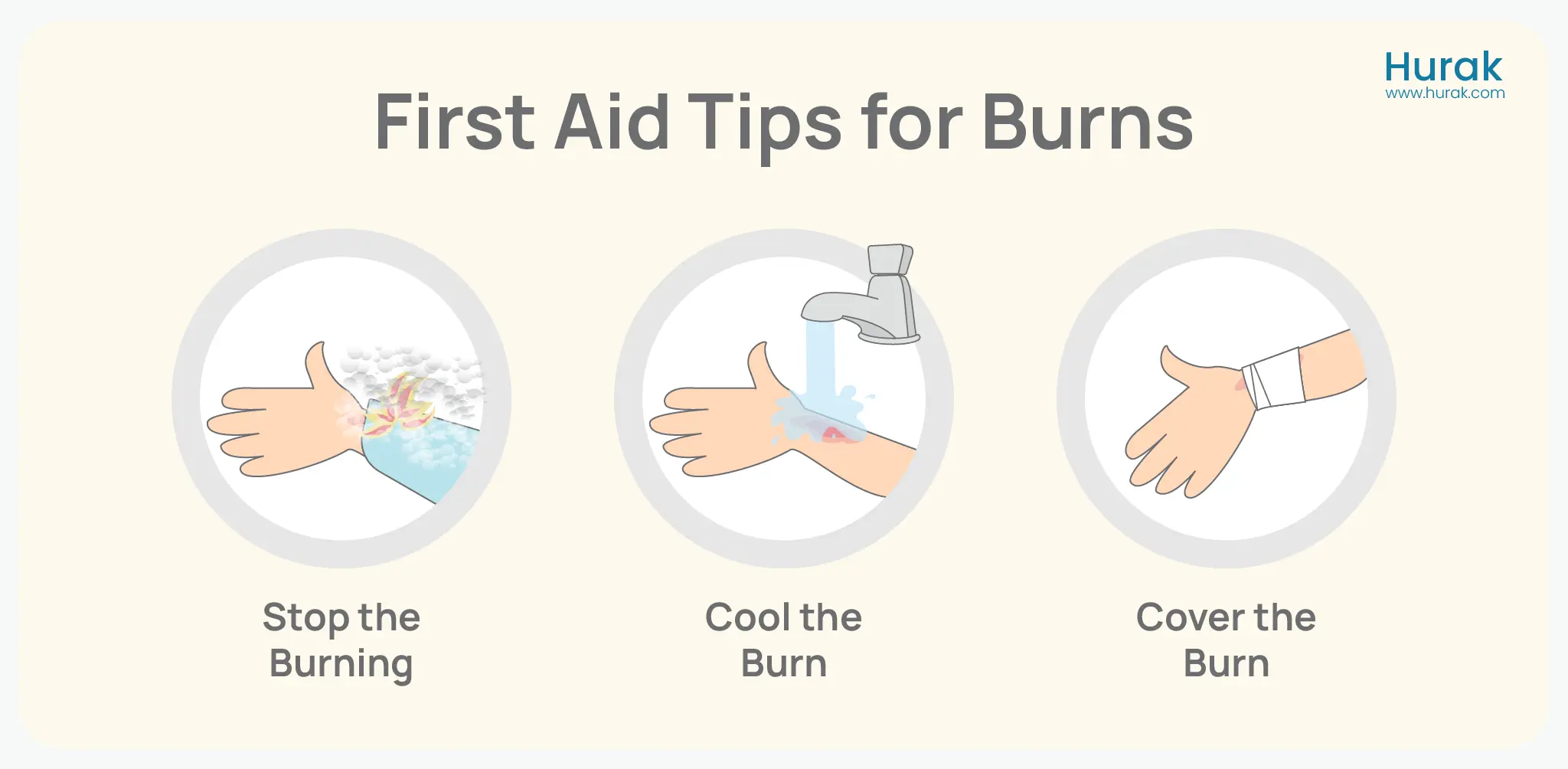Understanding Burns
Burns can be classified according to severity—first, second, and third-degree—and can be caused by heat, chemicals, electricity, and radiation, among others. The types are first-degree burns, which only affect the epidermis and are marked with redness and pain; second-degree burns, which also produce swelling and the formation of blisters; and third-degree burns, which affect all the layers of the skin and may require medical treatment at once. It is essential to recognise that first aid for burns needs to be done without delay to help minimise pain and improve the healing process.
Burn First Aid Steps: What You Need to Know

- Stop the Burn: Quickly remove yourself or the person from the source of the burn (like fire or hot object). Take off any jewellery or clothing near the burn unless it’s stuck before the area swells.
- Cool the Burn: Run lukewarm water over the burn area for at least 20 minutes. If water isn’t available, use cold milk or canned liquids.
- Cover the Burn: Cover the burn with a clean, non-stick bandage or cloth after cooling. Avoid using cotton, as it can stick to the burn.
Always remember to act quickly to reduce the damage.
Do not wrap cling film tightly around the burn, as the area needs room to swell. You can cover the burn with a clean plastic bag if the burn is on a hand or foot. Avoid ice, creams, or gels, as these can damage the skin and increase the risk of infection. Also, do not break any blisters that may form, as this can lead to infection.
First Aid for Different Types of Burns
Simple or first-degree burns are usual and can be experienced at home. Applying a thin layer of burn relief gel immediately underneath the water and dressing the area with a clean bandage is highly recommended. Burns classified under scalds—burns caused by hot water, steam, and similar agents—should also be cooled and dressed with a non-sticky dressing.
Do not burst any formed blisters, as they help shield the skin layer. Scalds with steam water are a frequent result of accidents at home. The burn can be cooled under running water and treated with an antiseptic agent or a burn reliever gel. Applying a bandage on the affected part protects the burn from infections.
Chemical burns, for their part, are quite different and require special treatment. Any contaminated clothing must be removed cautiously, and the affected parts must be washed with cool water for at least 20 minutes. Do not apply any creams on the skin unless advised by a doctor, and consult a physician immediately.

Ready to Learn More?
Understanding first aid for burns can make a significant difference in emergencies. Our First Aid courses offer complete training to help you handle critical situations. Whether you want to improve your skills or workplace safety, these courses help build confidence and expertise. View our Emergency First Aid at Work (EFAW) and Level 3 First Aid at Work courses. These courses meet the UK legal requirements and help you keep people safe.
Common Myths About Burn Treatment
There are several myths related to burn management. For example, when a person applies toothpaste on any burning area, it leads him or her to more disaster as it can cause irritation and increase the risk of infection. Likewise, putting ice on a burn makes some sense to reduce the pain but damages the tissue anew. They should, therefore, not use treatment methods with which they have no confidence, such as pouring water on the burns, but should stick to standard initial treatment procedures for burn injuries.
Burn First Aid Essentials
It is necessary to have adequate burn kit stock for emergencies. Basic burn care products include burn relief gel, antiseptic cream, and sterile burn dressings. They are some supplies that make the best impact to give an instant response and quick recovery.




